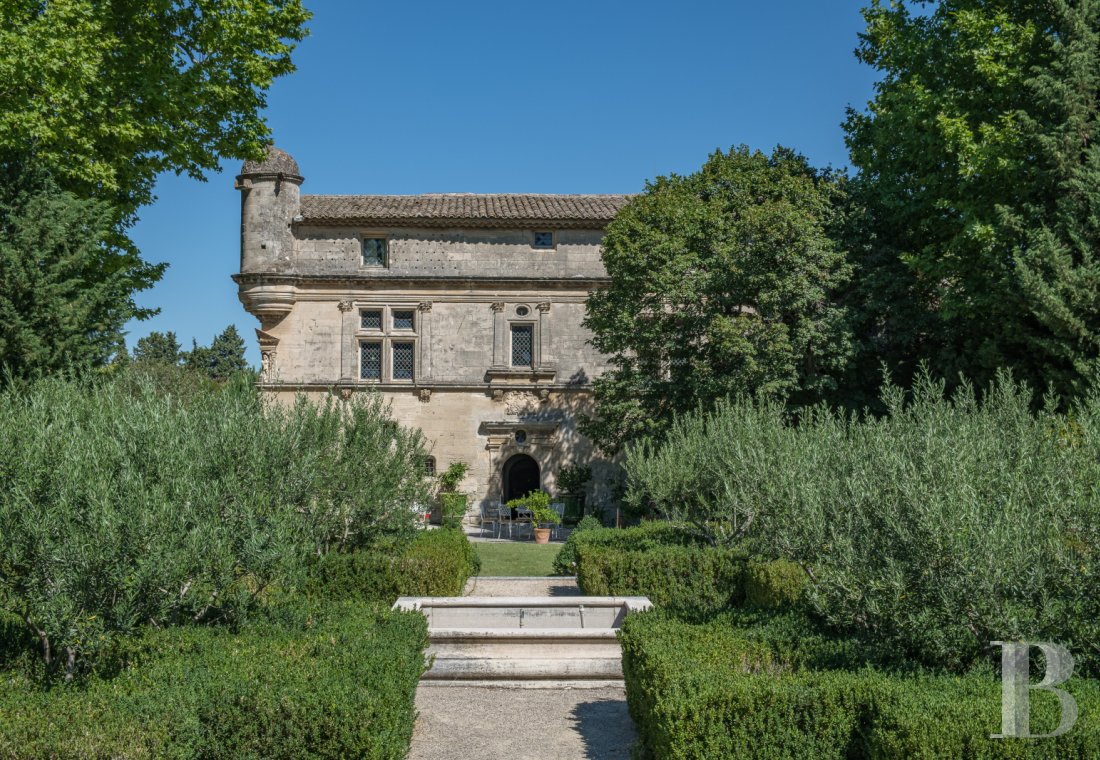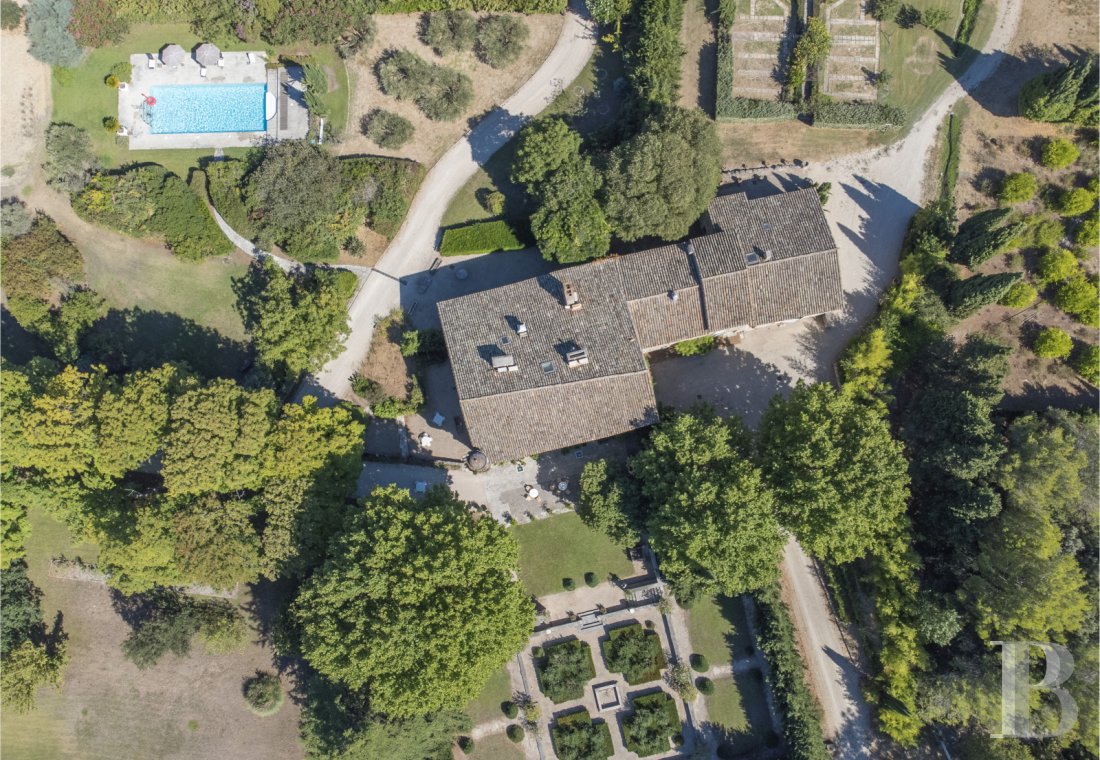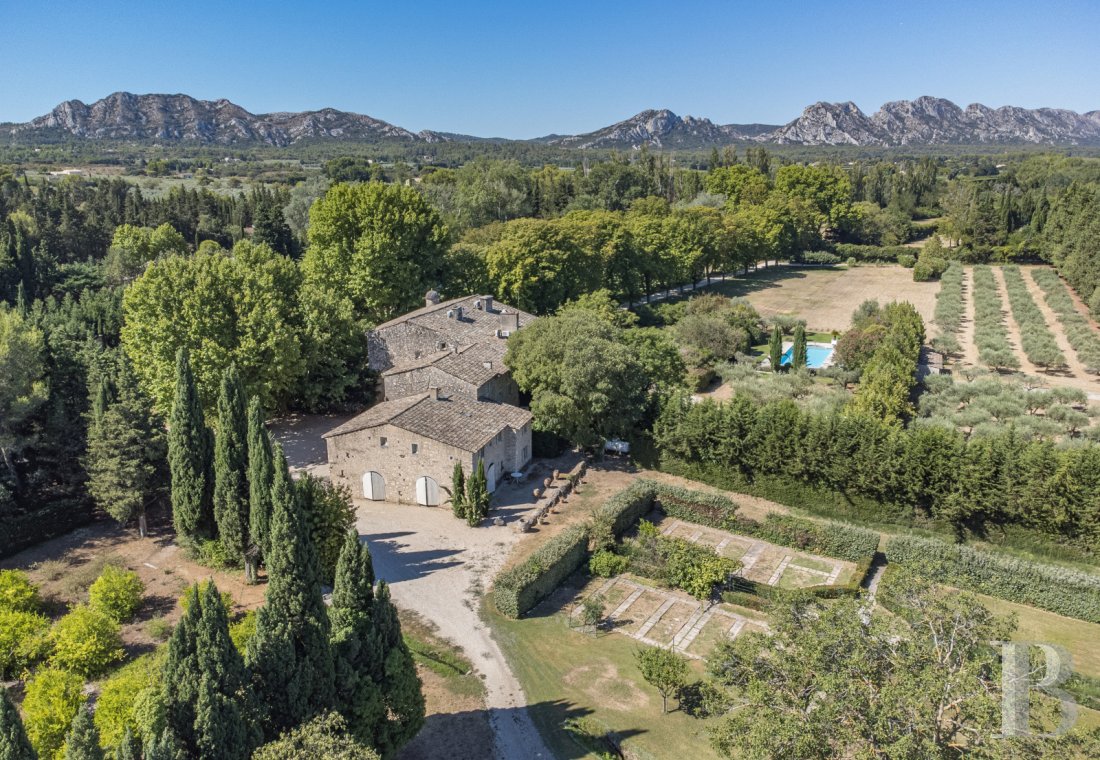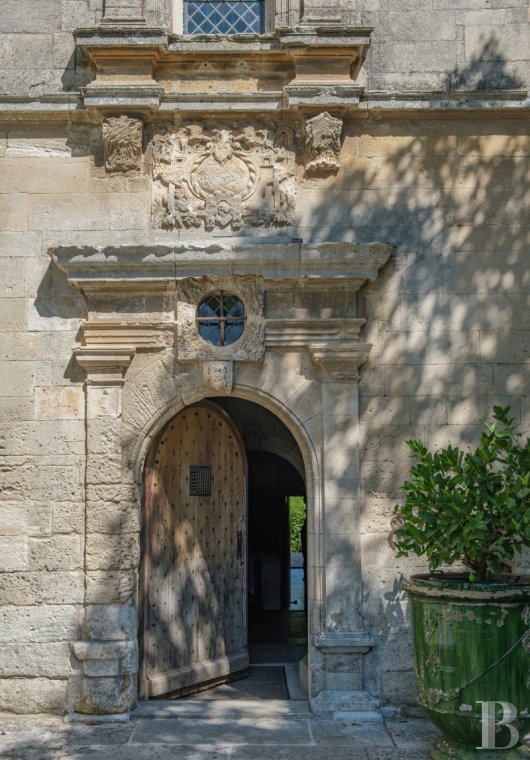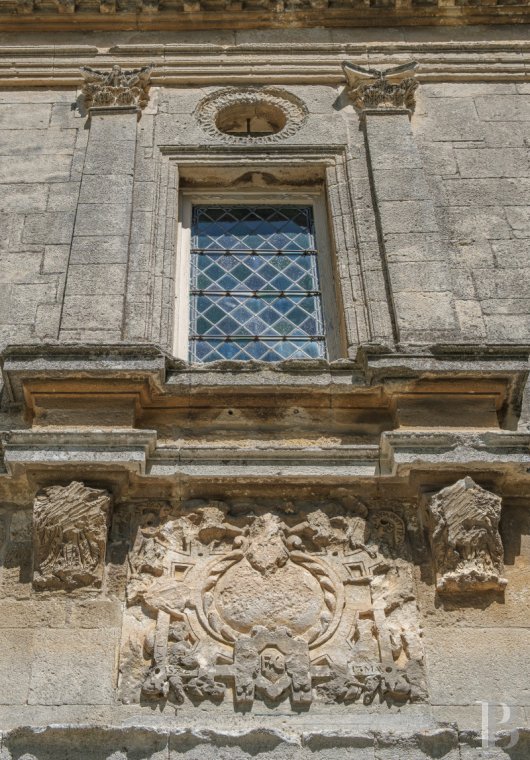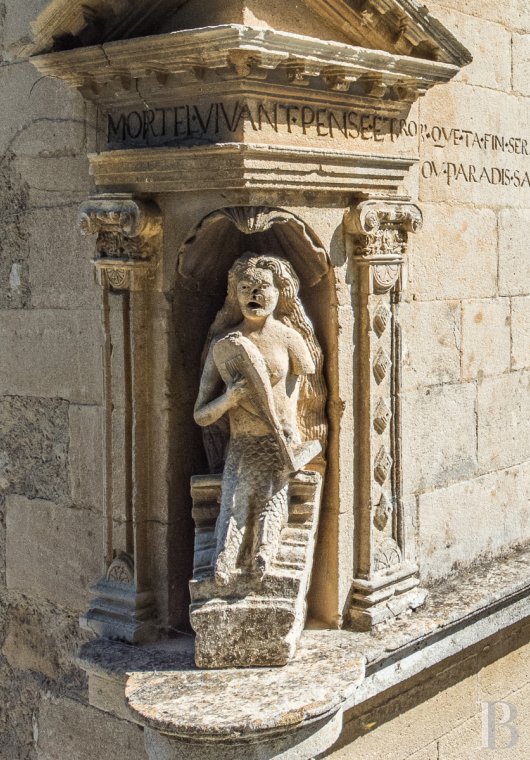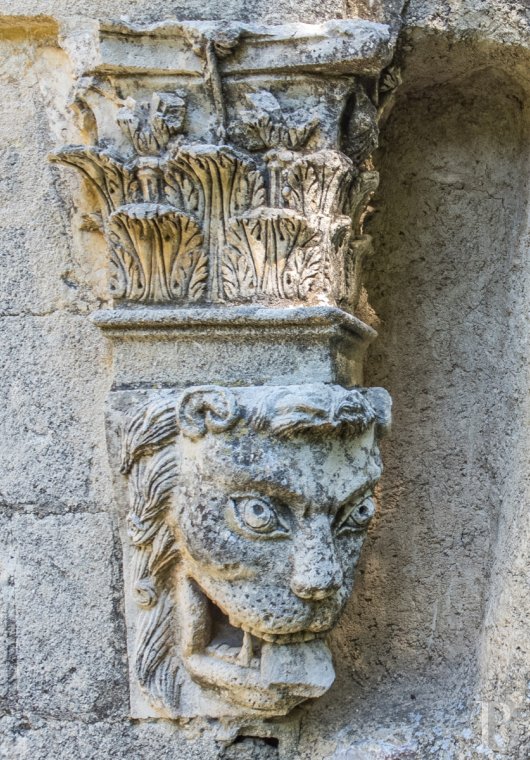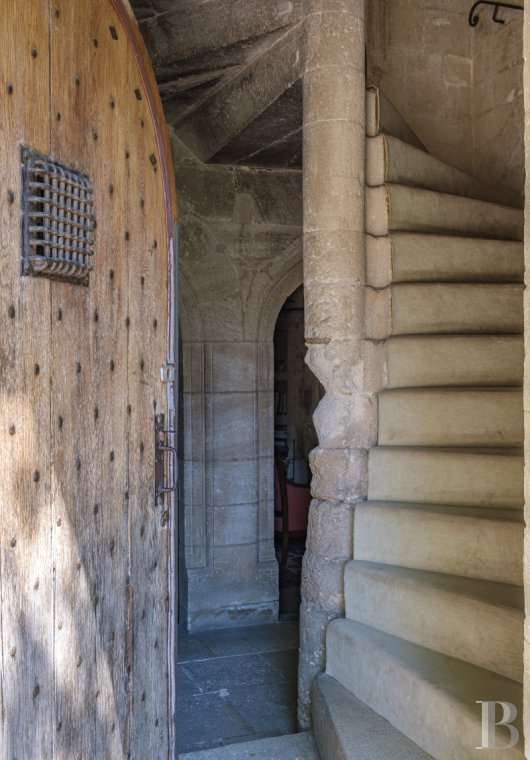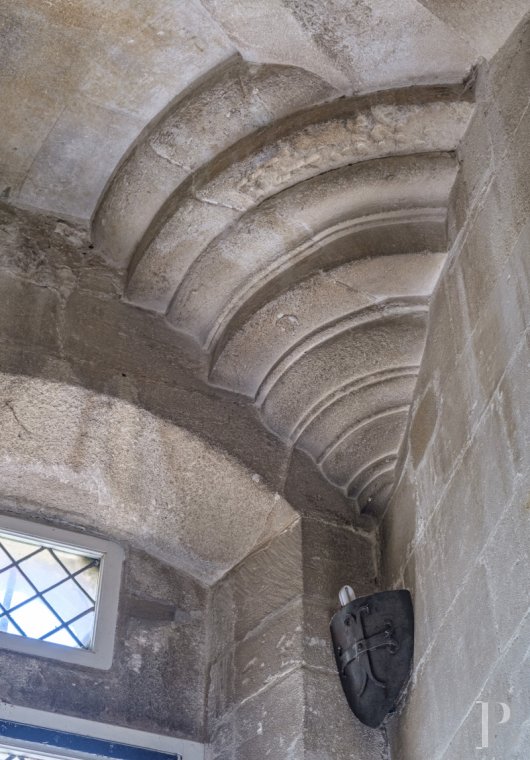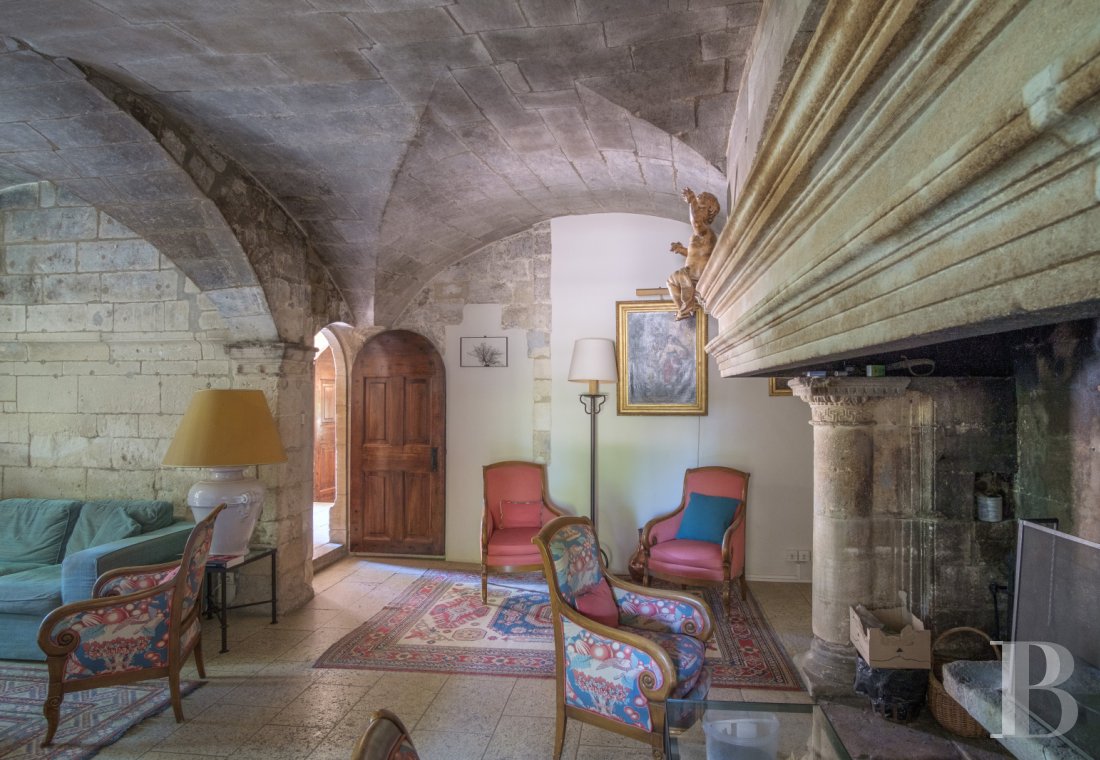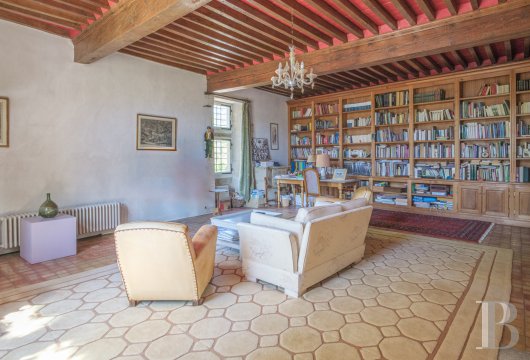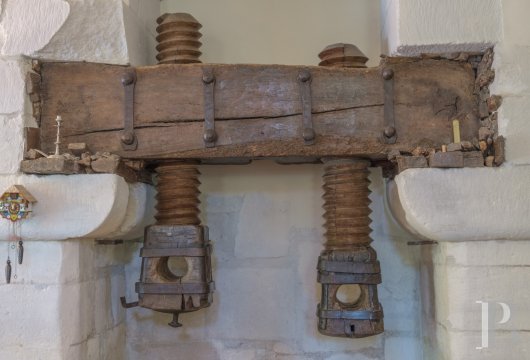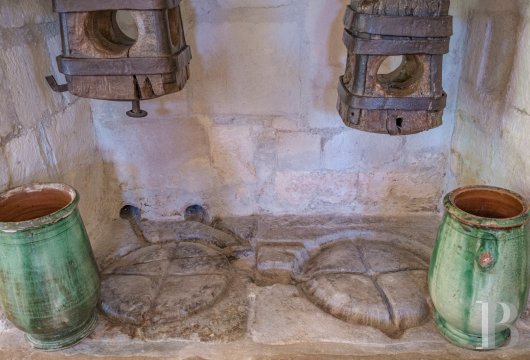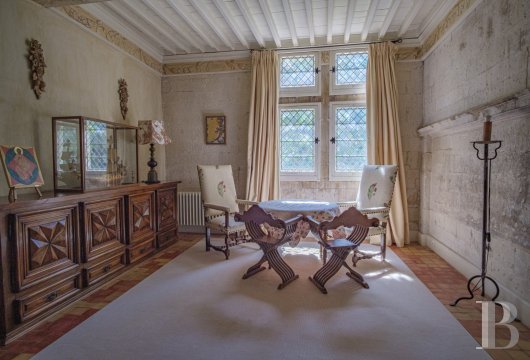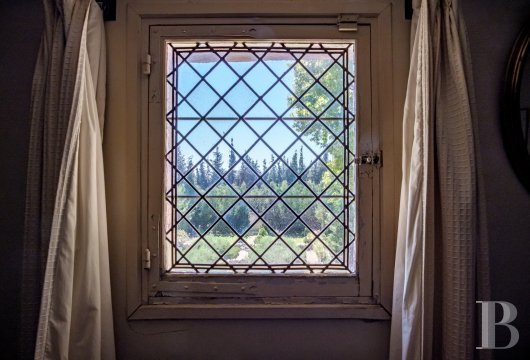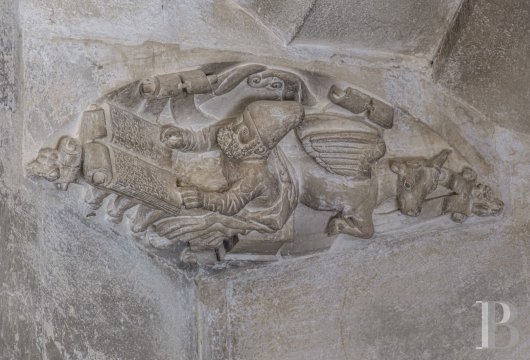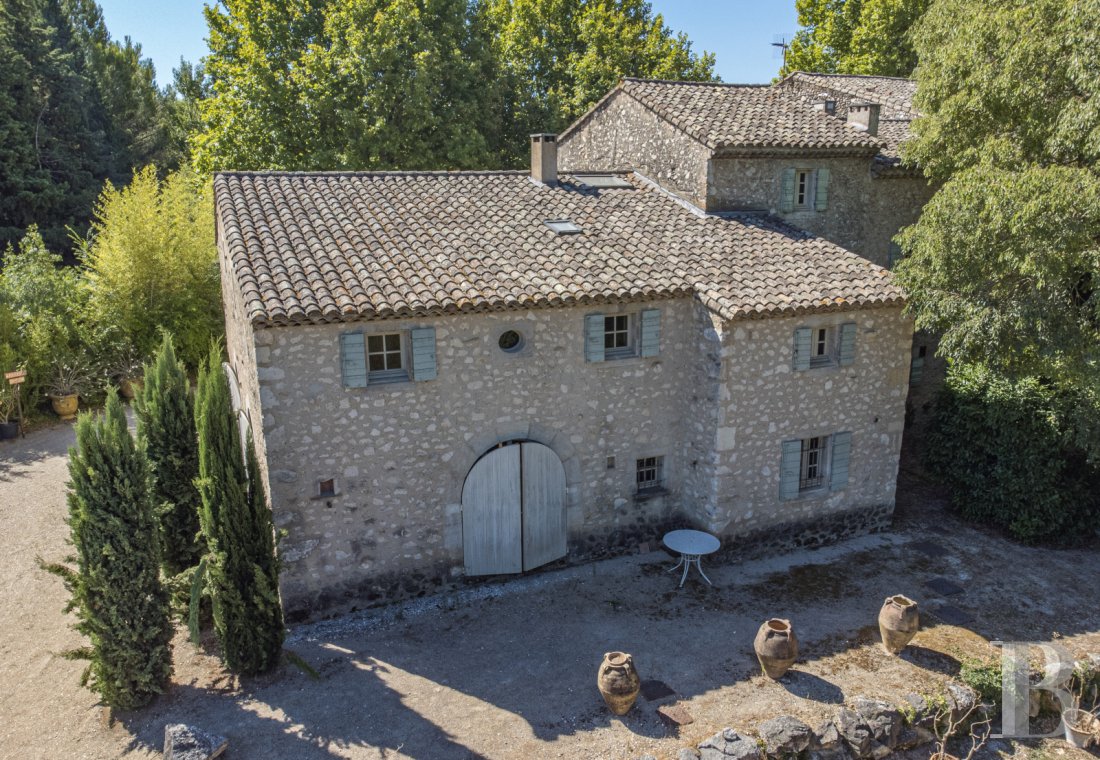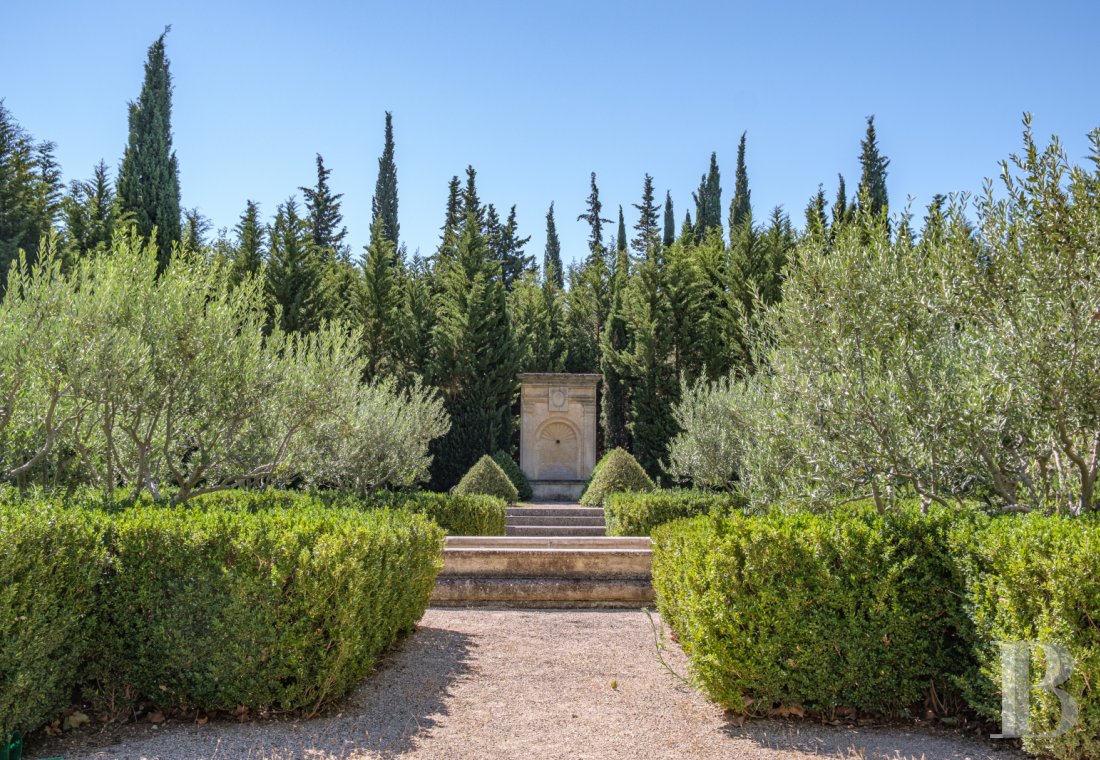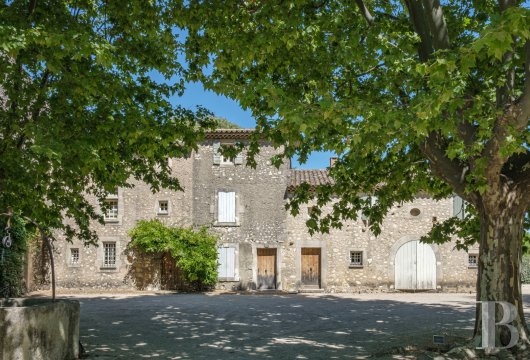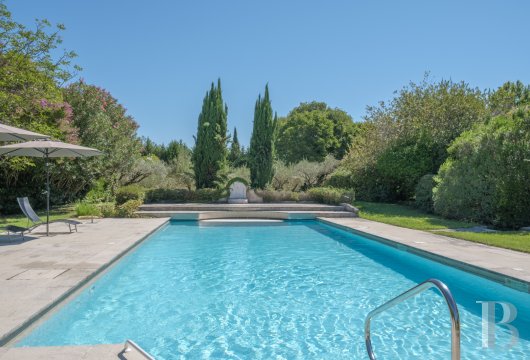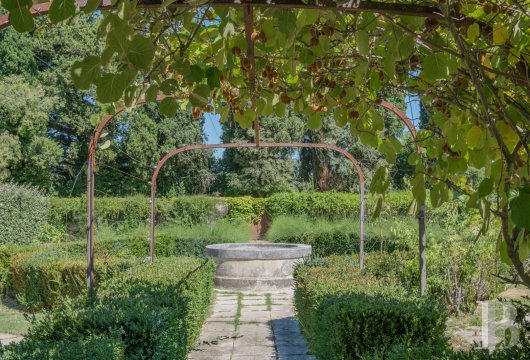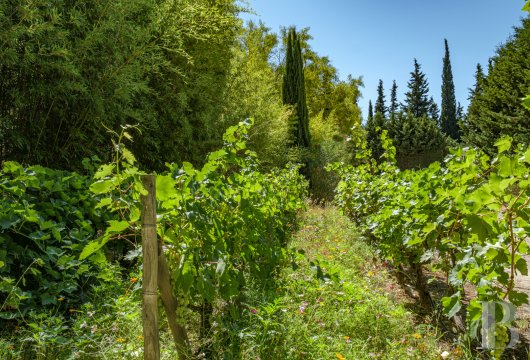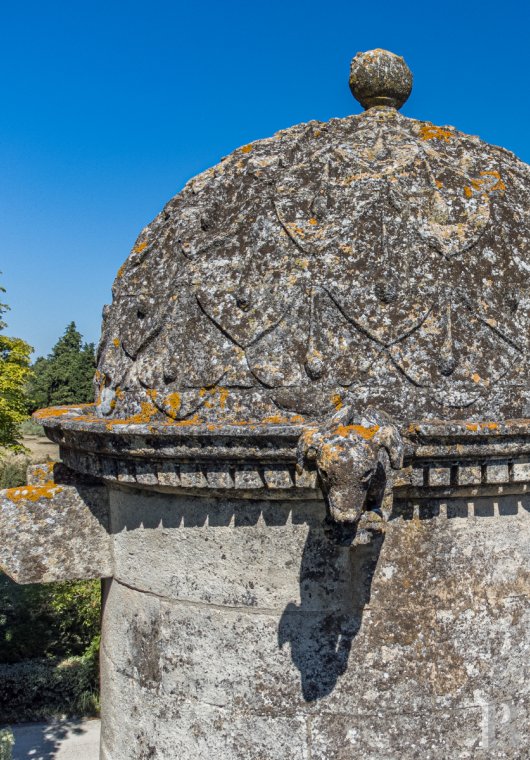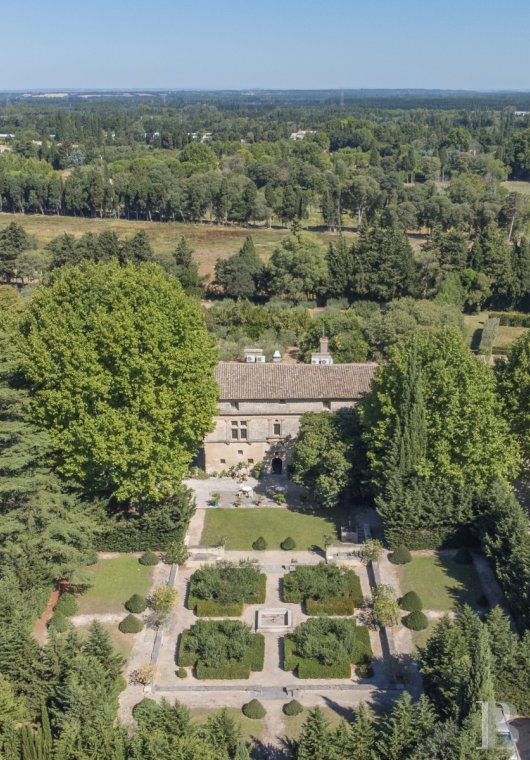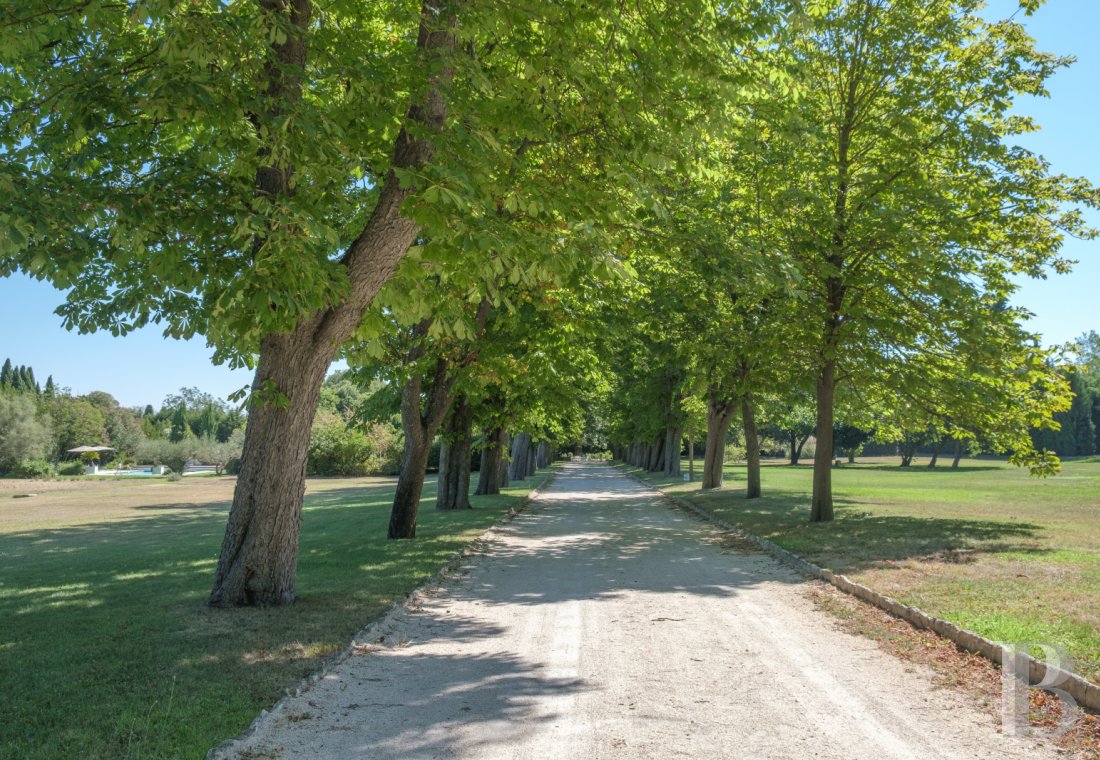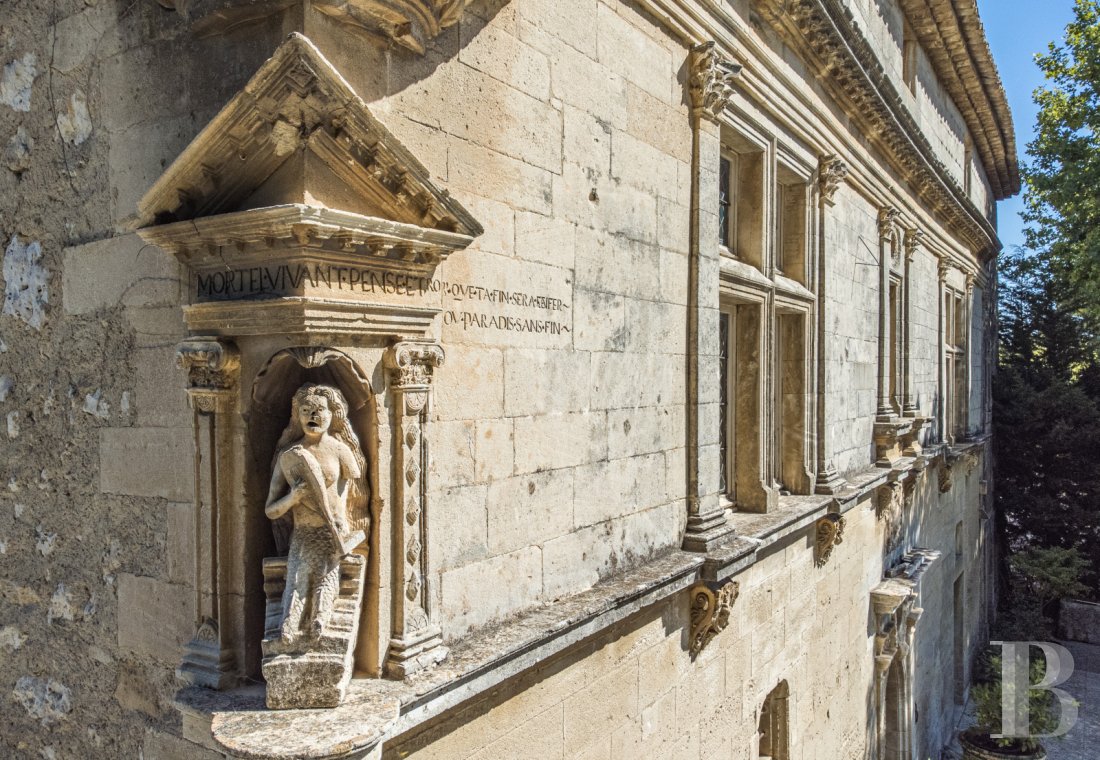and its gardens at the foot of the Alpilles mountains in Eygalières

Location
This property stands in the midst of the mountains and the Alpilles Regional Nature Park, below the rocky outcrop of Eygalières, a village where intellectuals live happily with famous actors, media personalities and the local, lively, working population. Proud of its 2,000 years of history, Eygalières gets its name from the Romans who named it “Aquarelia”, meaning “receiving water”, and lets passers-by and inhabitants alike enjoy its fountains and the Alpines Canal, an asset more invaluable than ever in the rocky landscape of the Alpilles Mountains.
The village, renowned for its many restaurants, is also proud of its much-appreciated shops, its production of AOC olive oil and its vineyards.
Although it does not have a train station, Eygalières is linked to a good local road network, putting it 30 minutes from Avignon TGV train station, 30 minutes from Arles, 20 minutes from Aix-en-Provence and 40 minutes from Marseille-Marignane airport.
Description
The first is the Renaissance-style manor house, known as the “Mas de la Brune”, constructed in 1572; the only building of this type, standing in the middle of the land, rising up like a nave, proudly showing visitors the prow of its watch-turret.
Directly adjoining the manor, a more recent construction dating from the 18th century stands in the shade of a three-hundred-year-old lime tree. This building once housed the staff accommodation.
And lastly, on the east side, where a perimeter wall no doubt once existed, a rehabilitated farmhouse is separated from the manor by a row of cypress trees. Opening on to a vast courtyard that extends behind the French formal garden, it acts as a link with the rest of the parklands, where the permanent singing of the precious water, coming down from the Alpilles Mountains via the canal of the same name, can be heard.
The French Historic Monument listing, dating from the 9 August 1924, applies solely to the “Mas de la Brune”, already showing on Cassini’s 18th century map under the name of “Grand Mas”. Some say it was constructed for the consul Pierre-Bruno-Isnard, who gave it the feminine version of his surname, whilst others maintain it was for an alchemist, whose name is long forgotten. In both cases, this outstanding building, entirely constructed from Baux stone, was probably built by master mason, Gaston-Flayelle, native of the Vivarais region, who also designed the “Hôtel de Manville” in Les-Baux-de-Provence.
The size of the manor house, its biblical paraphrases sculpted on the façade, like a big open book, and including the secret number of steps of its spiral stairway tend to reinforce the hypothesis of an alchemist’s home.
A spacious tiled swimming pool, cleverly concealed from onlookers in a copse of laurel bushes, has been installed a good distance from the main house.
And lastly, a carpark, out of sight of the manor but able to take ten or so cars, has been laid out in the shade of mulberry plane trees.
The manor house
The main, south-east facing facade has a single row of windows shored with mullions. The low, semi-circular arched entrance is topped with a panel without coats-of-arms. Upstairs, the united pilasters, flanking the windows, features sculptures which transform the facade into a book of hours on which it is possible to read: “MORTEL. VIVANT. PENSE ET CROYE. QUE TA FIN SERA ENFER OU PARADIS SANS FIN.”.
However, the most outstanding detail on the facade is a round watch-turret, with corbelling and a richly sculpted cupola, set on a corner of the building like the forecastle of a stone ship. A small corner alcove houses a musician mermaid, appearing as a symbolic figurehead.
The upper half-floor was used as a silkworm nursery until the early 20th century.
The north-west facade has no decoration whatsoever.
The garden-level floor
A vestibule, reached via a low door off the vast, paved terrace, has three semi-circular-arched doors featuring moulding, with an angel, a demon and a grotesque on angular keystones.
This vaulted level, with few openings, was above all used for utility purposes in the aim of protecting the building from the outside, without seeking to reflect anything spectacular. And yet, it houses a very spectacular spiral stairway, decorated with rich sculptures, which is immediately visible when the low door opens! It symbolises an inverted “tree of life”, with “Adam & Eve” and the “Creation of the world” depicted at the top of its flight and the “Salvation” at the bottom, on entering the manor.
A short corridor leads to the kitchens, laid out on the north side and fitted with professional equipment, a souvenir of the time when these premises were a hotel-restaurant. A back kitchen, a storeroom and a linen room preserve the original utilitarian aspect of this level.
On the left-hand side is a living room which was converted into an olive oil press-house as of 1682 and still features the two giant wooden screws housed in a Baux stone “chapel”.
On the right-hand side, a lounge is enhanced with a monumental fireplace, with its original “potager” (a secondary hearth where soups and other previously prepared dishes were cooked on embers), on Roman foundations. Visitors are ever astonished by its gigantic proportions.
The first floor
The spiral stairway goes up to this level, with the obligatory reading of allegories in the form of masks, adorning the steps. The presence of the four evangelists on the stairway squinches highlights, just like the exterior facade, its character of a real book of hours, engraved in the stone of the manor: outside, the pagan world; inside, the Christian world. For instance, Saint Luke sitting on a stool and writing under the protection of the Ox. The phrase that he is writing in his book and that the sculptor faithfully engraved remains perfectly legible: “Luc trouva onc. Racine. Ne si Très Bonne Médecine pour Tous. En tout et tout lieu. Que de Scrire du Fils de Dieu”. On either side of the stairway, which constitutes the building’s backbone, the first or noble floor has exactly the same layout as that on the garden level. It comprises two vast rooms with outstanding French ceilings, featuring wooden crossbeams that are painted or decorated. One is currently in use as a library and, the other, the master bedroom, with its bathroom. Other bedrooms and bathrooms complete this floor on the north side.
The intermediate level
This level has exactly the same layout as the first floor and the garden level, the spiral stairway leading to two semi-circular-arched doors, topped with sculptures of antique style heads. The crowning of the stairway newel is enhanced with two angel heads and two grotesques representing Anger and Greed.
On this level, where it is possible to observe the inverted end of the tree of life with the Creation and Adam & Eve, there is also a vestige of a watch-turret and another stairway; the latter very probably led to an observation terrace, thus substantiating the hypothesis of an owner who was not only alchemist, but also astronomer. The famous neighbour Nostradamus, Saint Remy of Provence, died six years prior to the laying of the first stone of the “Mas de la Brune”, giving at least the certainty that it was not him! This half floor, once used for storing silkworm cocoons, was not used as living space until the middle of the 20th century. Nowadays, it comprises no less than six bedrooms and six bathrooms.
The staff accommodation
Now completely linked to the manor house via the garden level and the floors, to the point of forming a single building, this section was probably converted in the 18th century. Opening on to the south terrace via double, small-paned, French windows, it is said to have housed the small bedrooms used by the relatively few members of the manor’s domestic staff.
On the ground floor, linked to the manor’s large lounge via a hall area, a study now opens on the south-east side on to the terrace shaded by a three-hundred-year-old lime tree. The north section houses a boiler room and a utility room in keeping with the utilitarian use given to the ground floor.
On the first floor, two bedrooms communicate with the manor house via a door and with two bathrooms.
And lastly, on the half floor, three bedrooms and three bathrooms complete the living space.
The farmhouse
This building, spanning two floors above a Renaissance-style base and contour features, was greatly remodelled in the 19th century and during the time the estate was given over to a hotel from 1970 to 1990.
The inside currently offers significant living space. Its very spacious rooms, linked to the characteristic appearance of Provencal Mas which have come down through the ages by superimposing influences and styles, means that it blends perfectly and harmoniously with the manor, with which it stands, slightly out of line, in front of its bright, airy courtyard. It interconnects with the manor on the north-east side via utility rooms and the caretaker’s accommodation.
The ground floor
This level is reached via the extensively vast courtyard, in which stood the stage for Eygalières’ international music festival. A door provides access to the caretaker’s accommodation which is totally self-contained, despite being an integral part of the farmhouse. Double carriage doors open on to an opening which reveals the function room and conference room used during its hotel lifetime, most probably converted in the old cowshed in the 1970’s and tastefully restored in the 1990’s.
The first floor
This level comprises several very comfortable bedrooms, converted and rehabilitated in the 1990’s.
The second floor
Extending the half floor in the manor house, this level has openings bigger than those on the lower floor, letting a particular luminosity into the few bedrooms laid out there. The view over the parklands and a part of the Alpilles Mountains does the rest, greatly enhancing the upper floor.
The gardens and the parklands
This verdant, fully enclosed, 4-ha estate is predominantly composed of a few rare species, such as the two-hundred-year-old horse chestnut trees lining the central driveway, the three-hundred-year-old lime tree shading the terrace or the majestic, two-hundred-year-old plane tree.
In 1997, the current residents entrusted landscape gardeners, Arnaud-Maurières and Eric-Ossar, with the creation of a contemporary garden, the “Alchemist’s Garden”, composed of magical species, with French Remarkable Garden classification. Nowadays, the garden is completely overgrown, but the “Mas de la Brune” still has an outstanding vegetable garden, designed in keeping with a model suggested by the famous agriculturalist from the Renaissance era, Olivier-de-Serres.
The south-east terrace is extended by an ornamental garden, laid out in the shape of a cross and enhanced with a fountain and a central pond.
Our opinion
The “Mas de la Brune” has lived several lives, perhaps like the alchemist who lived there, and remains shrouded in mystery almost 500 years after its construction.
Currently a family home, once a luxury hotel or the setting for a prestigious music festival, a place steeped in riddles and secrets concerning worlds no longer in existence, the manor-ship of the “Mas de la Brune” is obviously ready to set sail towards new destinations. This is the type of house that will embrace its future. It has greatly demonstrated its versatile nature and ability to come down through the ages, whilst remaining courageous and majestic. It is now awaiting a worthy project and, above all, a captain to steer it in keeping with its unusual history.
Reference 276562
| Land registry surface area | 4 ha 7 a 59 ca |
| Main building surface area | 800 m2 |
| Number of bedrooms | 17 |
| Outbuilding surface area | 400 m2 |
| including refurbished area | 400 m2 |
NB: The above information is not only the result of our visit to the property; it is also based on information provided by the current owner. It is by no means comprehensive or strictly accurate especially where surface areas and construction dates are concerned. We cannot, therefore, be held liable for any misrepresentation.

